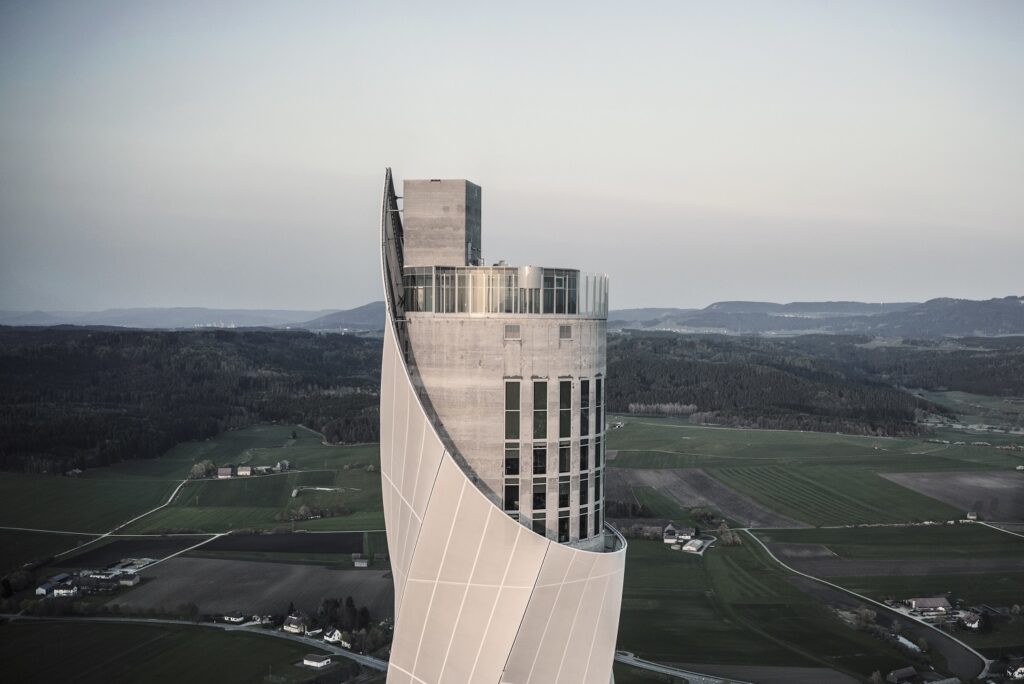
ThyssenKrupp Test Tower in Rottweil
The ThyssenKrupp Test Tower (TKT) is located in the historical town of Rottweil, one of Germany’s oldest urban agglomerations, dating back to Roman times. Rottweil is particularly famous for its medieval towers and spires. The landscape around Rottweil is dominated by the lush hill country of the high plain between the Black Forest and the Swabian Alb. The high-rise building itself is highly visible from within a radius of 15-20 km. Given this particular urban and scenic setting, a sensitive design of the tower’s overall shape and especially of its façade was particularly important. Rising to a height of 246 m the ThyssenKrupp test tower in Rottweil is one of Germany’s tallest structures.
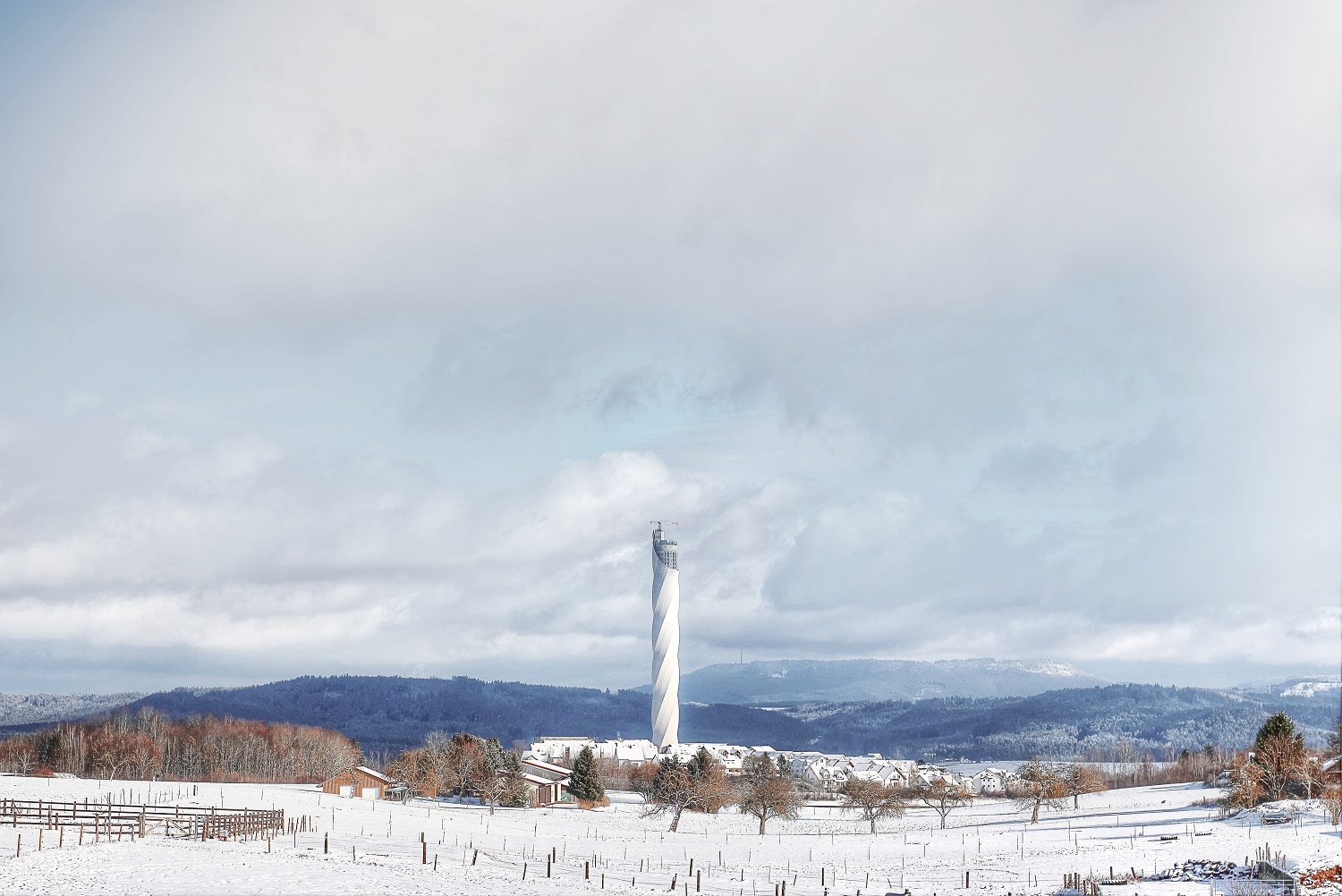
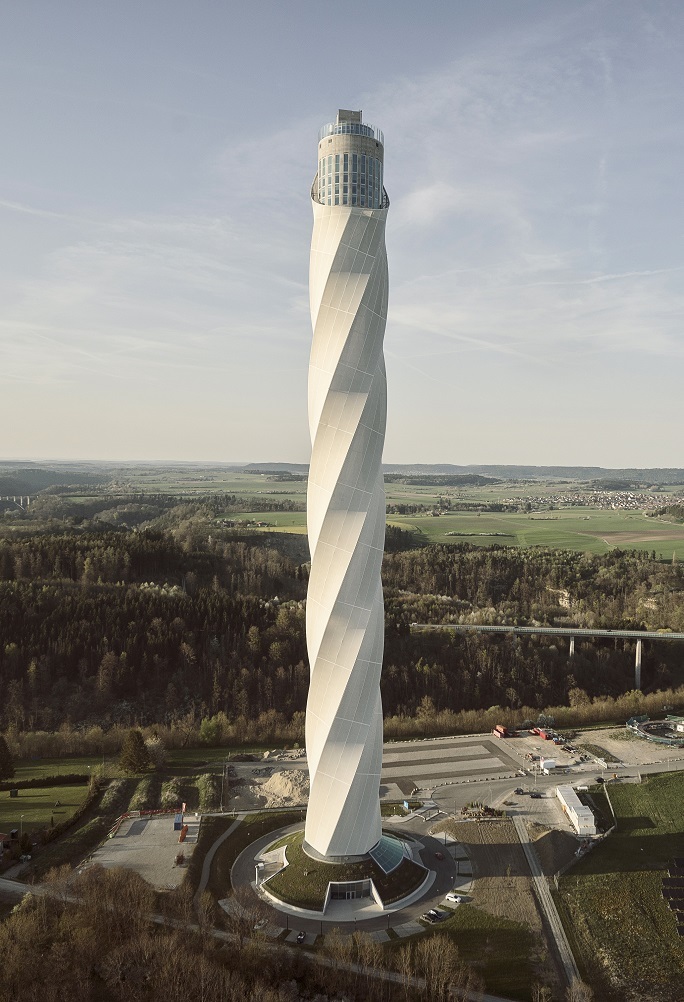
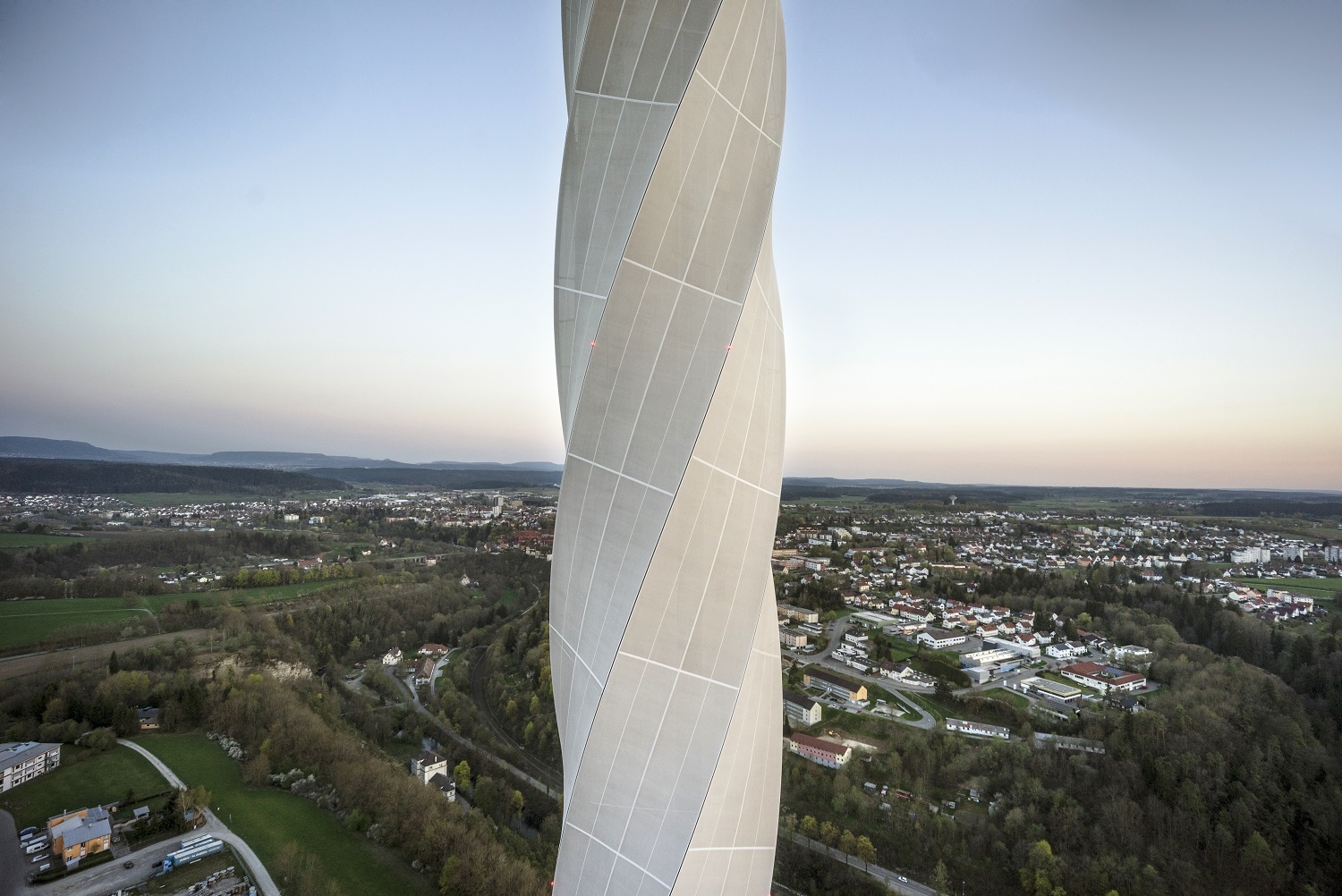
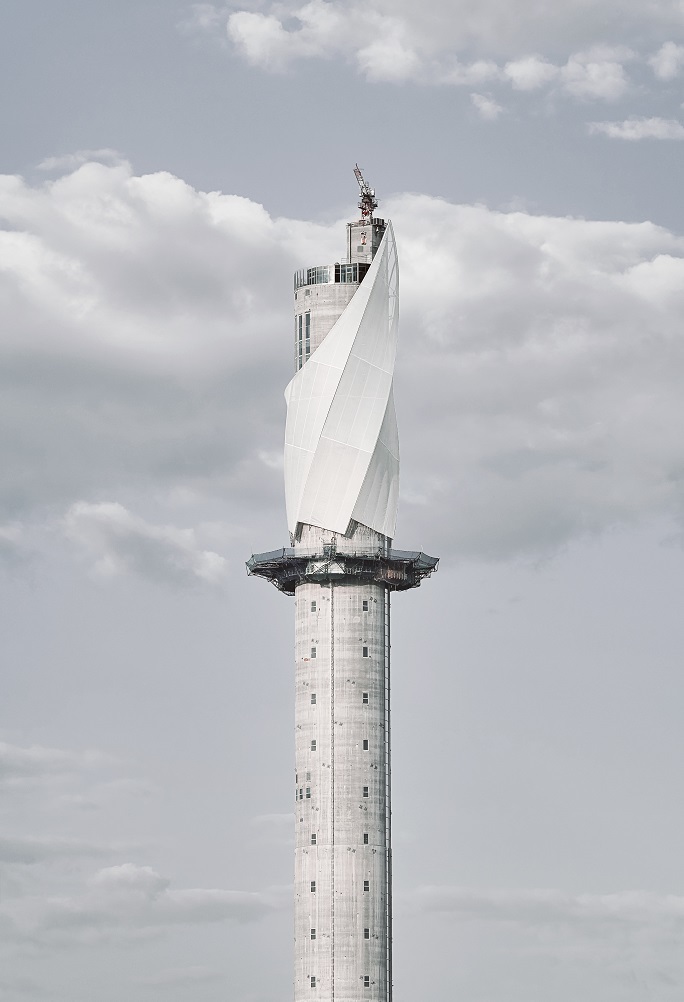
The main design idea behind the ThyssenKrupp Test Tower was the creation of a highly efficient technical structure that at the same time enhances its surrounding by its sculptural qualities. The tower was to unite high visibility and instant recognizability. It was to blend into the surrounding landscape, while also enriching it with its character as a unique landmark.
For the simulation of various wind and/or earthquake loads an active pendulum is suspended at a height of 200 meters on cables of approximately 9 meters in length. The pendulum can be used actively to make the tower oscillate on purpose. This makes the tower the only high-rise building in the world that can deliberately be made to oscillate.
The facade is the tallest textile-clad building in the world. Designing and engineering this facade was a particularly demanding challenge. It not only involved taking such questions as installation and wind loads into account but also required the consideration of diverse aspects of maintenance, weather resistance, etc. This necessitated numerous coordination meetings with various contractors as well as a range of tests, material evaluations, and experimental assemblies. The envelope consists of a PFTE coated glass-fiber mesh. The facade’s spiral arrangement influences the vortex shedding and minimizes the stress from lateral oscillation by approximately 40 percent (thus leading to a reduction of 15 percent in the amount of steel and concrete). The facade also shades the tower shaft, thus reducing the stresses induced by solar radiation.
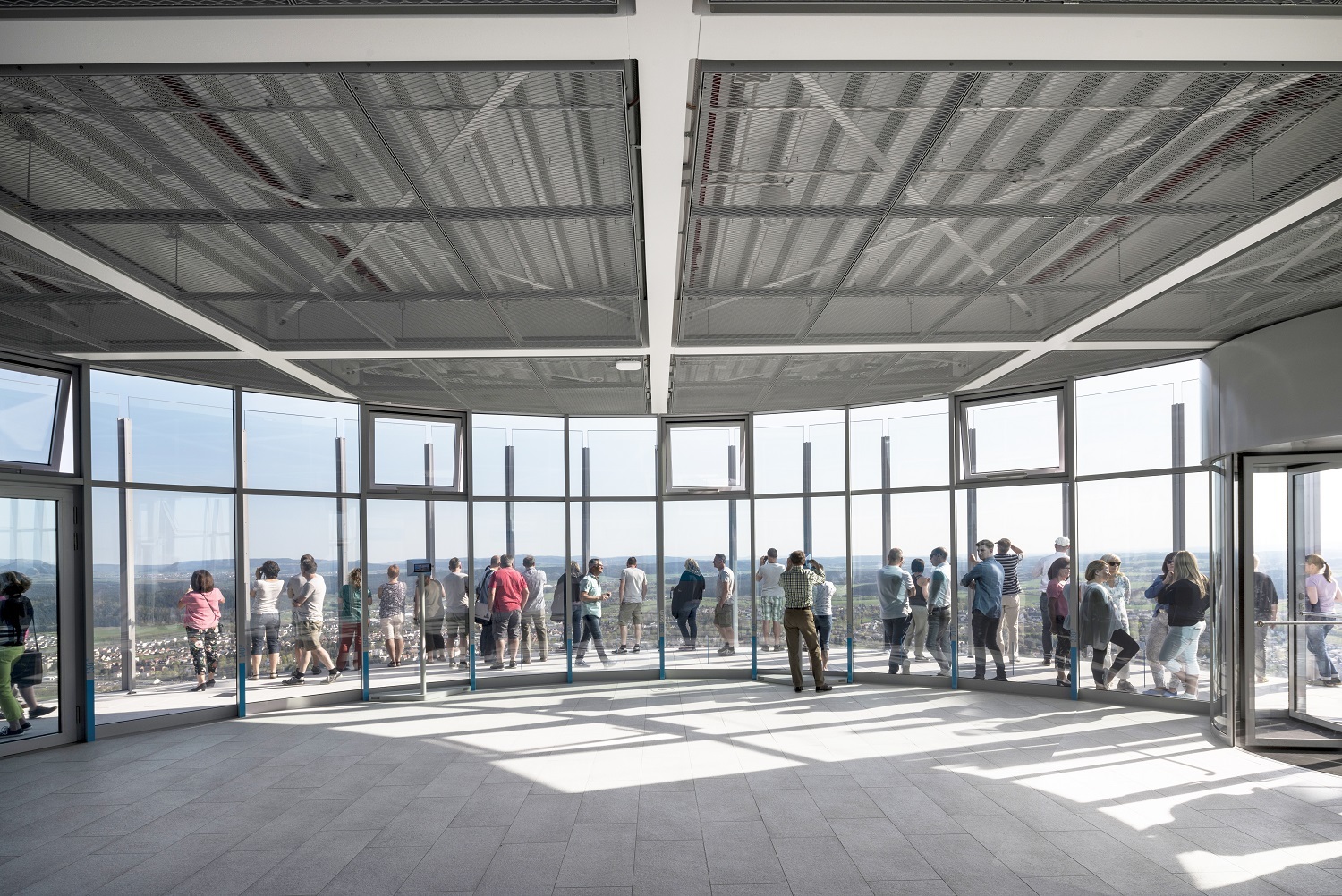
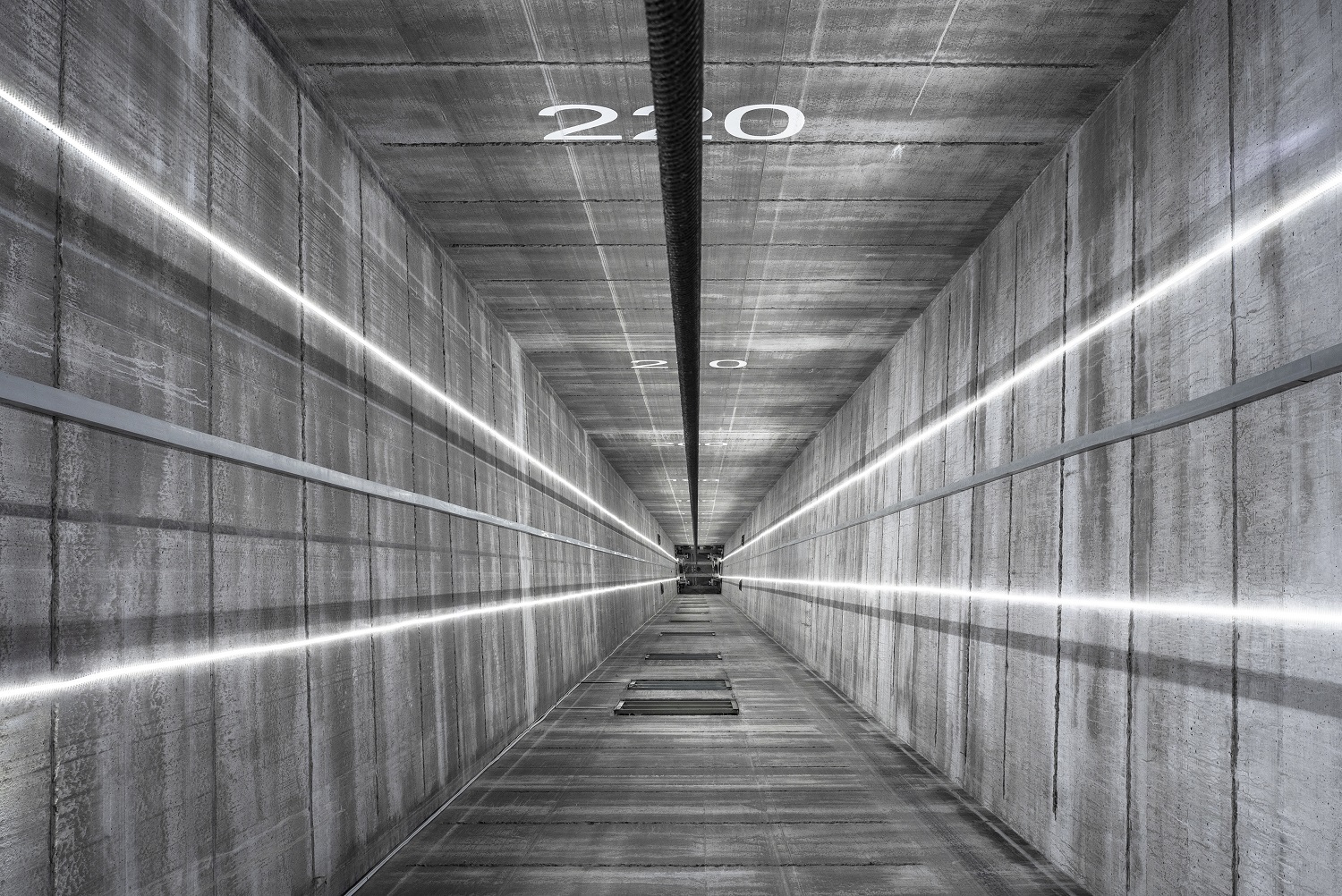
Seven years ago, Elevator manufacturer ThyssenKrupp has unveiled its latest technological advance, a cable-free, multi-car, multi-directional elevator that has the potential to revolutionize the size and shape of future skyscrapers.
Run using magnetic technology similar to that used by Maglev trains, with each cabin running its own individual motor, the “MULTI” elevator system opens up the potential for elevator cabins to move horizontally as well as vertically. This in turn offers the potential for multiple cabins to operate in a single system, with cabins going up one shaft and down an adjacent shaft.
The many cabins enabled by MULTI mean that passengers would only have to wait an average of 15-30 seconds for an elevator, regardless of the size of the building. And when it comes to size, MULTI gives a distinct advantage: freed from the constraint of a single cabin per elevator shaft, and the resulting banks of elevator shafts that eat up the floor space of today’s tallest buildings, MULTI removes a major limiting factor on the potential heights of buildings. Furthermore, with the ability to switch to a horizontal shaft, large buildings no longer have to be arranged around a single vertical core.
Visit tkelevator.com/ for more information
Facts and details about Rottweil Test Tower:
- At 246 meters high, the test tower in Rottweil is the tallest building in Baden-Württemberg. In second place is the 217-meter television tower in Stuttgart.
- At 232 meters, it is the highest observation deck in Germany and is closely followed by the tallest European observation tower in Frankfurt am Main at 224 meters.
- A total of ThyssenKrupp Elevator is investing EUR 40 million in this research institution.
- The test shafts of the test towers have a total length of 2.1 km, so if the tower had only one shaft of this length, it would be eight times its actual height and would be twice as tall as the world’s tallest building under construction (Jeddah Tower, Saudi Arabia, 1,007 meters).
- The whole tower weighs 40,000 tons – that’s up to 8,000 African elephants.
- A total of 15,000 m3 of concrete and 2,500 tonnes of steel were used. The amount of steel corresponds to the daily production of the modernized ThyssenKrupp furnace in Duisburg.
- Less than ten months have passed since the laying of the foundation stone until the ceremonial completion of the rough construction. In other words: In just 245 days, the tower got from zero to -32 and back to 232 meters.
- On some days, the tower rose 5 meters a day. Its growth was five times faster than that of some bamboo species. On average, the tower grew at a speed of about 3.5 meters per day.
- The cladding has a total area of 17,000 square meters, which corresponds to two football fields.
- The tower provides an exclusive test environment for the MULTI system – the world’s first elevator system without guide ropes. Three interconnected shafts allow this ingenious elevator to move horizontally in the tower.
- The fastest elevators in the test tower will move the shaft at speeds of up to 18 m / s (65 km / h), twice the speed of Usain Bolt during his world record run.
- The staircase has more than 1,500 steps. The unofficial record of running up the stairs in the test tower (start at -32 meters, end at 232 meters) is still 15 minutes.